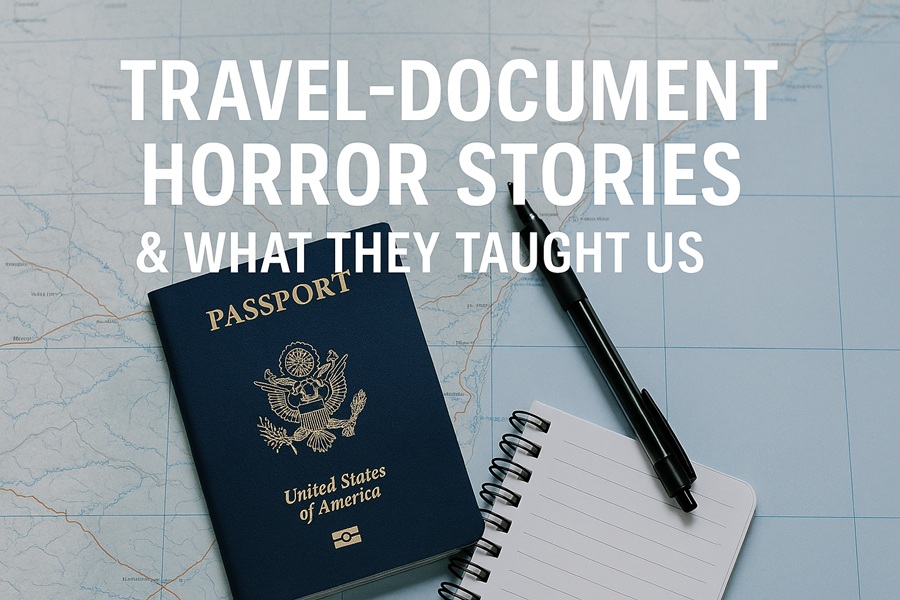When it comes to international travel, nothing feels more essential than your passport. It’s the golden ticket that unlocks new adventures - and when something goes wrong with it, the experience can quickly turn into a nightmare. The good news? Every travel document horror story carries a lesson that can save you from the same fate.
Here are some real-life examples of passport mishaps - and the practical takeaways you can apply before your next trip.
1. The “Almost Expired” Passport
Story: A traveler booked a dream trip to Italy, only to be denied boarding at the airport. Their passport was valid for two more months - but the Schengen Zone requires at least three months’ validity beyond the departure date.
Lesson Learned: Always check the entry requirements of the country you’re visiting. Don’t assume a “valid” passport at home is valid abroad. A safe rule of thumb: renew your passport if it will expire within 6–9 months of travel.
2. The Water-Damaged Disaster
Story: After a tropical vacation, a traveler packed a still-damp swimsuit in the same bag as their passport. The pages became warped and the ink smudged. At the airport, officials deemed the document “unreadable” and denied departure.
Lesson Learned: Treat your passport like cash - keep it dry, clean, and protected. Invest in a waterproof sleeve or RFID-blocking passport holder. If your passport gets damaged, apply for a replacement immediately.
3. The “Wrong Visa Stamp” Problem
Story: A traveler in Southeast Asia crossed several borders in a short span. At one crossing, an officer accidentally stamped the wrong page, creating the appearance of an overstay. When exiting the country, the traveler faced fines and hours of questioning.
Lesson Learned: After every border crossing, double-check your passport. Make sure the stamp is dated correctly, placed clearly, and matches your visa type. Catching errors early can save you major headaches later.
4. The Stolen Passport in Transit
Story: On a crowded train in Europe, a traveler’s bag was stolen - passport and all. They spent three days in limbo, filing police reports and visiting the nearest U.S. embassy for an emergency passport.
Lesson Learned: Always keep your passport on your person, not in a bag that can be snatched. Make photocopies and store digital copies securely (encrypted cloud storage or a password-protected phone folder). Know where your nearest embassy or consulate is located before traveling.
5. The “Name Doesn’t Match” Nightmare
Story: A newlywed booked tickets under her married name but hadn’t updated her passport yet. At check-in, the names didn’t match, and the airline refused boarding.
Lesson Learned: Your passport name must exactly match your ticket and ID. If you've recently changed your name, renew your passport well before making travel arrangements.
Final Thoughts
While these stories are stressful to read, they highlight the importance of preparation. A passport is more than just a booklet - it’s your lifeline abroad. By learning from these travelers' mistakes, you can safeguard your own journeys and focus on the joy of exploring new places.
FAQ: Travel-Document Mishaps
Q: What should I do if my passport is lost or stolen abroad?
A: Report it immediately to local police and contact the nearest U.S. embassy or consulate. They can issue an emergency passport to get you home.
Q: How can I protect my passport while traveling?
A: Use a waterproof, secure holder. Carry it on your body, not in checked bags. Keep photocopies and digital backups.
Q: How soon before my trip should I renew my passport?
A: Ideally 9 months before expiration. Many countries won’t accept passports with less than 6 months of validity left.
Q: Can I travel with a damaged passport?
A: It depends on the damage. If the chip, picture, or personal info page is affected, you’ll likely need a replacement. Err on the side of caution and renew it.


